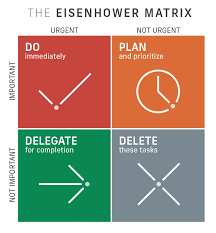What Satish Taught Me About Embodied Leadership in the wake of loss
- Prashasti Kaustubh
- Jul 30
- 4 min read
"I never thought I'd be doing all this alone. I'm not ready to let her go."
These raw, vulnerable words settled in the coaching room, heavy with a haunting silence..
Satish (name changed), 36, sat across from me — his eyes bearing the weight of sleepless nights, his voice steady yet his body shrunken with the invisible burden of loss, it looked like he had not eaten in weeks. Just two weeks prior, his beloved wife had passed away after a prolonged, heartbreaking battle with cancer. And here he was, back at work. Not because anyone expected him to be, but because he felt an immense sense of responsibility for his team and a demanding project that had consumed them all for months.
The Man Behind the Role
Satish isn't just an executive; he's a person navigating profound personal pain. He's a devoted father to two young daughters who are also grappling with an unimaginable void. He's a son who has endured the loss of both parents — his mother in childhood, and his father to COVID-19. He's a caregiver who spent three years walking hand-in-hand with his wife through the arduous journey toward the inevitable. And, perhaps most ironically, he's the Head of HR at a fast-paced advertising agency where empathy often feels in short supply amidst relentless deadlines.
He returned to work not out of a sudden surge of resilience, but out of a deep-seated sense of obligation.
Initially, he attributed project delays to familiar workplace challenges: employee conflict, micromanagement from above, and tardiness. But then, a moment of profound introspection. He looked down, held his breath, and quietly confessed:
"I couldn’t be there for my team because I’m not able to be there for myself."
🌿 When Leadership Meets Grief
Grief doesn't ask if you're ready; you just find it standing at your doorstep. And when you're in a leadership position, its ripple effect extends beyond you, touching your team,other projects you are working on, and undeniably impacting your capacity to lead.
What truly struck me wasn't that Satish returned to work "too early," but the profound reason he came back.
It wasn't for distraction from his pain.
It wasn't to chase a fleeting sense of normalcy.
Instead, it was to reclaim some semblance of structure — even as his inner world felt like it was crumbling.
And that, in itself, is a deeply embodied leadership move. It's showing up honestly, in pain and tears, but with a quiet, powerful intention.
🧠 What Is Embodied Leadership?
Embodied leadership isn't about apathetically pushing through adversity with sheer grit alone. It's about tenderly integrating your mind, body, and emotions — leading from a place of genuine presence, not a manufactured pretense.
It's when your actions genuinely align with your internal state, rather than attempting to mask it.
It's about learning to listen not just to your thoughts, but to the subtle yet important signals your body offers: the tension, the abject fatigue, and even the moments of silence that speak volumes.

💡 Coaching Insights: Embodied Leadership Practices in Times of Grief
If you, or someone you're supporting, is navigating the immense challenge of leading through loss, these embodied strategies can offer a gentle path forward:
1. Acknowledge the Grief – In the Body, Not Just the Head
Grief isn't a problem to be solved with logic; it's a powerful wave that needs to be felt. It can manifest as a suffocating tightness in the chest, a crushing heaviness in the shoulders, or fog in the brain.
🌀 Practice: Begin by gently tuning into your physical self. You might start a quiet moment or coaching session with a simple body scan. Ask yourself, "What part of my body feels the most tired or heavy right now?" This compassionate awareness is often where the journey of leadership healing truly begins.
2. Choose Presence Over Performance
There's no need to "be strong" in the conventional, often isolating, sense. True strength can be found in the courage to say:
“I need help.”
“I’m not okay right now.”
“I’ll show up, but I won't be at full speed.”
🌀 Practice: Before a meeting, take a moment to gently ground your feet. Take three slow, deep breaths, allowing yourself to settle. Speak a little more slowly than usual. By allowing your team to witness your authentic presence, even if it's not "perfect," you create a space for their own humanity.
3. Set Emotional Boundaries Without Withdrawing
You can continue to care deeply for your team without feeling the need to suppress your own complex emotions. Transparent boundaries, delivered with care, might sound like:
“I may be a little slower to respond, but please know I’m listening.”
“I might not be able to attend every meeting, but I trust you to lead in my absence.”
🌀 Practice: Communicate your capacity and bandwidth clearly and kindly. In doing so, you not only protect your own energy but also empower your team to step up and support each other.
4. Reconnect With Purpose
Grief often feels like it strips away our fundamental "why." Yet, paradoxically, it can also illuminate what truly matters most.
Satish didn't return just to finish a project; he returned to prevent his team from unraveling.
That, for him, became his profound new anchor.
🌀 Practice: Take a moment to reflect on what core values still resonate and feel profoundly true in this moment of grief — perhaps integrity, compassionate care, or innovative creativity? Let that enduring purpose gently guide your next leadership step.
Grief will undoubtedly transform how you lead, but this transformation isn't necessarily for the worse.
It can strip away the illusion of control, leaving you more truly present.
It can quiet the overwhelming noise, helping you discern and prioritize what genuinely matters.
Most powerfully, it can teach you how to lead not just with your intellect, but with your entire, authentic self.
Satish's journey reminded me that leadership isn't about rigidly pushing through pain; it's about courageously making room for it without allowing it to consume the entire space.
Sometimes, the most powerful and honest thing a leader can say is:
“I’m not ready. But I’m still here.”



Comments